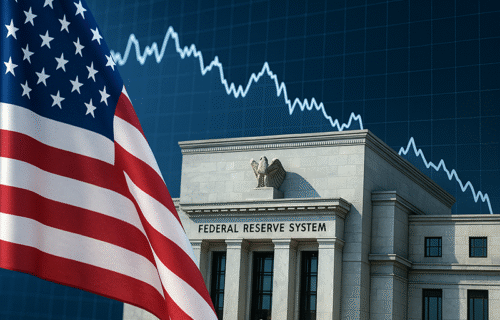The U.S. Federal Reserve cut its benchmark interest rate by 25 basis points on Wednesday, lowering the federal funds target range to 4.00–4.25 percent. The move marks the central bank’s first rate reduction of the year and reflects growing concerns about a cooling labor market and persistent strains in the housing sector. Policymakers also signaled that further cuts are likely before the end of 2025.
The decision comes at a time when the U.S. economy is showing mixed signals. Inflation remains elevated, with consumer prices rising about 2.9 percent year on year in August, while core inflation, which excludes volatile food and energy components, continues to hover above 3 percent. Shelter costs remain a key driver of price pressures, keeping overall inflation above the Fed’s long-term target of 2 percent. Yet the central bank has shifted its focus toward risks in employment, noting that hiring has slowed sharply, layoffs are rising, and long-term joblessness is becoming more entrenched. In August, the U.S. economy added just 22,000 jobs, the weakest figure in several years, while initial jobless claims reached 263,000 in early September, their highest level in nearly four years.
Federal Reserve Chair Jerome Powell described the cut as a “risk management” move designed to stabilize the labor market while maintaining vigilance on inflation. Projections released in the Fed’s latest Summary of Economic Projections show that most officials anticipate at least two more quarter-point reductions this year, a signal that monetary policy is entering an easing cycle after a long period of restrictive settings. However, the Fed remains cautious. According to the projections, policymakers expect real GDP to grow by just 1.6 percent in 2025, with a modest pickup to 1.8 percent in 2026. Unemployment is projected to rise slightly to 4.5 percent this year before edging down toward 4.2 percent over the medium term. Inflation is forecast to decline gradually, with overall PCE inflation at 3.0 percent in 2025, easing toward 2.5 percent by 2027, but only converging slowly to the Fed’s 2 percent goal.
The housing market, one of the most interest-rate-sensitive sectors of the economy, remains under significant pressure. Mortgage rates have declined modestly to about 6.35 percent for a 30-year fixed loan, their lowest level in nearly a year, sparking a surge in refinancing applications. But affordability remains stretched, with home price growth slowing to just 1.4 percent year on year in July and new listings up by more than 25 percent compared to last year. Builders have increasingly resorted to price cuts, with nearly four in ten reporting reductions in September, the highest share in over five years. Analysts warn that while the rate cut may offer some relief to borrowers, it is unlikely to generate a strong rebound in housing without a more substantial easing of financing conditions.
Financial markets reacted cautiously to the announcement. Equities initially gained but later traded mixed as investors weighed the Fed’s dovish tilt against the persistence of inflationary pressures. Treasury yields slipped, reflecting expectations of further monetary easing, but some traders remain skeptical about how aggressive the Fed can be in cutting rates without risking a resurgence of inflation.
The balancing act facing the Federal Reserve is delicate. By prioritizing labor market stability while inflation remains above target, the central bank is signaling a readiness to act preemptively against rising unemployment. At the same time, the projections underline that rate cuts will likely be gradual, with the federal funds rate expected to remain above 3.5 percent at the end of this year and ease only modestly thereafter. The message from policymakers is clear: while the path of interest rates is turning downward, the Fed is determined to avoid undermining hard-won progress on inflation as it navigates an uncertain economic outlook.
Source: comp.
